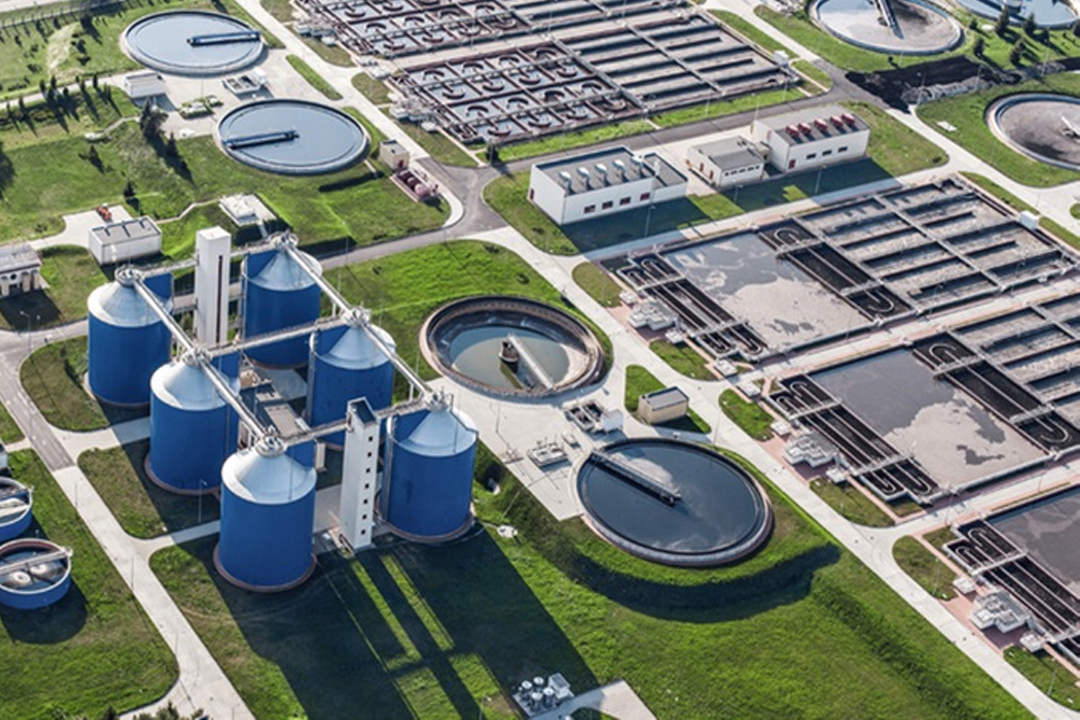Wastewater Treatment Plant

A Wastewater Treatment Plant (WWTP) is a facility designed to process and treat wastewater, typically from residential, industrial, and commercial sources, before releasing it back into the environment or reusing it. The main purpose of a WWTP is to remove contaminants, such as solid waste, organic matter, chemicals, and pathogens, to ensure that the water is safe for discharge or reuse.
Key Stages of Wastewater Treatment:
Preliminary Treatment:
The first stage involves removing large debris, such as sticks, leaves, and trash, which could damage equipment in the later stages.
This is often done through screening and grit removal processes.
Primary Treatment:
This stage focuses on removing suspended solids and organic materials.
Wastewater flows into large tanks where heavier solids settle to the bottom, and lighter materials, like oils, float to the top, which can be skimmed off.
The result is partially treated water that still contains dissolved pollutants.
Secondary Treatment:
The primary-treated water undergoes biological treatment, usually in aeration tanks.
Here, bacteria and other microorganisms break down dissolved organic matter.
This stage can involve activated sludge or trickling filters, where the water is mixed with bacteria to digest organic pollutants.
Tertiary Treatment:
This is an additional, more advanced treatment to further purify the water.
Processes like filtration, chemical treatment (e.g., chlorine or UV disinfection), and nutrient removal (nitrogen and phosphorus) are applied to remove any remaining pollutants.
Tertiary treatment ensures that the water is safe for discharge or reuse, depending on the required standards.
Sludge Treatment:
The solid waste removed during the primary and secondary stages (known as “sludge”) is treated separately.
It can undergo further processing like thickening, digestion (anaerobic or aerobic), dewatering, and sometimes incineration or composting.
This treatment reduces pathogens and stabilizes the sludge for disposal or beneficial use, such as fertilizers.
Environmental Impact:
Wastewater treatment plants play a crucial role in protecting the environment by preventing contamination of natural water bodies like rivers, lakes, and oceans. They help to reduce the spread of diseases, improve water quality, and promote the health of aquatic ecosystems.
Reuse and Resource Recovery:
In some advanced WWTPs, the treated water is further purified for reuse in industrial processes, irrigation, or even as potable water. Additionally, plants can recover valuable resources such as biogas from anaerobic digestion or phosphorus for fertilizers.
Conclusion:
A Wastewater Treatment Plant is an essential part of urban infrastructure, designed to protect public health and the environment. The treatment process involves a series of steps to clean wastewater, making it safe for discharge or reuse, while also minimizing the impact of waste materials on natural ecosystems. With the increasing global focus on sustainability, WWTPs are evolving to recover resources and contribute to the circular economy.
Lenntec – Water Treatment Solutions for a Cleaner, Safer Future!
© 2024 Created with Lenntec Team.
Service
Reverse Osmosis (RO) Plant
Water Softening Plant
Ultra Filtration Plant
Wastewater Treatment Plant
Zero Liquid Discharge Plant
Support
About Us
Privacy Policy
Terms and Conditions
Contact
FAQ
Contacts
(352) 683-0000
34606 Spring Hill, Florida, United States

